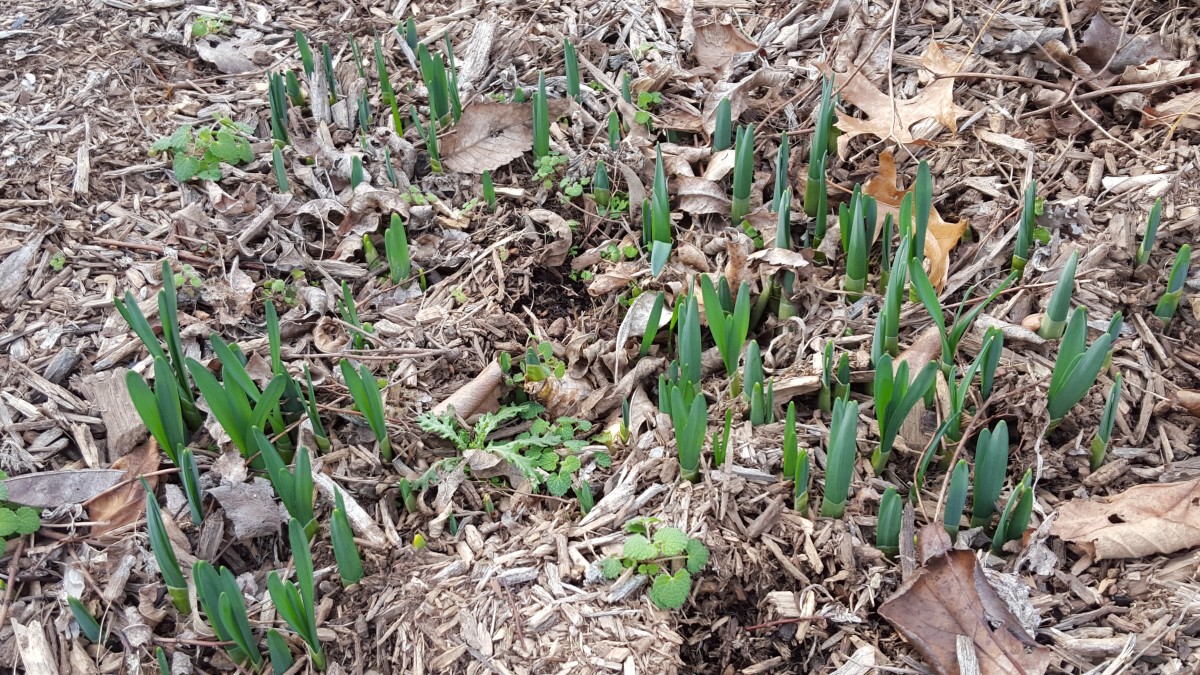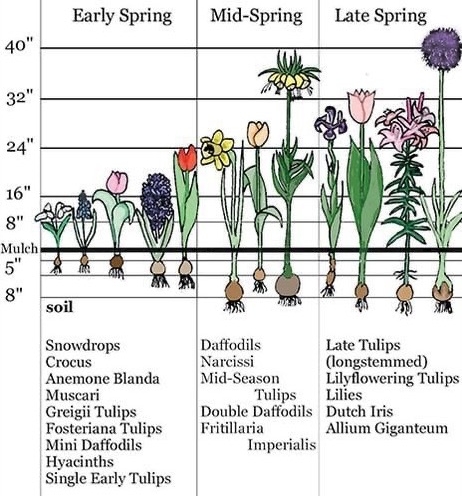Timing is Everything: Understanding Indiana’s Climate
Indiana’s climate plays a significant role in determining the success of bulb planting. To ensure beautiful blooms, it’s essential to consider the state’s temperature, moisture, and frost patterns. When deciding when to plant bulbs in Indiana, gardeners must take into account the region’s cold winters and warm summers. Bulbs planted in the fall need to be established before the ground freezes, while spring-planted bulbs must be able to withstand potential late frosts. By understanding Indiana’s climate and weather patterns, gardeners can plant bulbs at the optimal time, ensuring they thrive and provide vibrant colors to the garden.
Choosing the Right Bulbs for Indiana’s Soil and Climate
When it comes to selecting bulbs for planting in Indiana, it’s essential to choose varieties that thrive in the state’s climate and soil types. Popular bulb varieties suitable for Indiana’s climate include tulips, daffodils, and hyacinths. These bulbs are known for their hardiness and ability to withstand the region’s cold winters and warm summers. When selecting bulbs, consider factors such as bloom time, flower color, and growth habits to ensure they fit your garden’s unique needs. Additionally, consider the soil type in your garden, as some bulbs prefer well-draining soil while others thrive in richer, more fertile soil. By choosing the right bulbs for Indiana’s soil and climate, gardeners can enjoy vibrant, long-lasting blooms that bring beauty and color to their gardens.
How to Prepare Your Garden for Bulb Planting
Before planting bulbs in Indiana, it’s essential to prepare your garden to ensure optimal growing conditions. Start by selecting a location that receives the right amount of sunlight and has well-draining soil. Remove any debris, such as rocks and weeds, that could interfere with bulb growth. Next, test the pH level of your soil and amend it if necessary. Most bulbs prefer a slightly acidic to neutral soil pH, ranging from 6.0 to 7.0. Add organic matter like compost or well-rotted manure to improve soil structure and fertility. Till the soil to a depth of 8-10 inches to loosen and aerate it. Finally, rake the soil to create a smooth, even surface. By following these steps, you’ll create a welcoming environment for your bulbs to grow and thrive.
The Best Time to Plant Bulbs in Indiana: A Seasonal Breakdown
In Indiana, the best time to plant bulbs depends on the type of bulb and the season. For fall planting, September to November is ideal, as the cooler temperatures and increased moisture help bulbs establish themselves before winter. During this time, plant bulbs like tulips, daffodils, and hyacinths 6-8 weeks before the first frost. For spring planting, wait until the soil can be worked in late winter to early spring, typically around February or March. This allows bulbs like crocuses and grape hyacinths to bloom in late winter to early spring. When deciding when to plant bulbs in Indiana, consider the specific needs of the bulb variety and the local weather conditions. Check the average frost dates for your area and plan accordingly. By planting at the right time, you’ll give your bulbs the best chance to thrive and provide beautiful blooms in the spring.
Planting Bulbs in Indiana: A Step-by-Step Guide
Planting bulbs in Indiana requires attention to detail to ensure they thrive. Start by selecting a location with well-draining soil and full sun to partial shade, depending on the bulb variety. Before planting, inspect the bulbs for any signs of damage or rot, and discard any that are affected. Next, plant the bulbs at the correct depth, which is typically 2-3 times the height of the bulb. For example, if the bulb is 2 inches tall, plant it 4-6 inches deep. Space the bulbs 3-6 inches apart, depending on the variety, and orient them with the pointed end facing upwards. Fill the hole with soil, gently firming it around the bulb to prevent air pockets. Water the soil well to settle it and provide enough moisture to support establishment. After planting, apply a layer of mulch to retain moisture and suppress weeds. By following these steps, you’ll be well on your way to enjoying beautiful blooms in the spring. Remember to consider when to plant bulbs in Indiana and adjust your planting schedule accordingly to ensure optimal growth.
Tips for Caring for Your Bulbs After Planting
After planting bulbs in Indiana, proper care is essential to ensure they thrive and bloom beautifully in the spring. Watering is crucial, especially during the first growing season. Water the bulbs regularly, but avoid overwatering, which can lead to rot and other diseases. Fertilize the bulbs in the spring when the foliage emerges, using a low-nitrogen, high-potassium fertilizer to promote healthy growth and blooming. Mulching around the bulbs helps retain moisture, suppress weeds, and regulate soil temperature. Apply a 2-3 inch layer of organic mulch, such as straw or bark chips, around the bulbs. To protect your bulbs from pests and diseases, keep an eye out for signs of trouble, such as yellowing leaves or holes in the foliage. Remove any infected plants to prevent the spread of disease. By following these care tips, you’ll be rewarded with vibrant, healthy blooms in the spring. Remember to consider when to plant bulbs in Indiana and adjust your care routine accordingly to ensure optimal growth and blooming.
Common Mistakes to Avoid When Planting Bulbs in Indiana
When planting bulbs in Indiana, it’s essential to avoid common mistakes that can hinder their growth and blooming. One of the most critical mistakes is planting at the wrong time. Planting bulbs too early or too late can expose them to extreme temperatures, moisture, and frost, which can lead to poor growth or even death. Make sure to plant bulbs during the optimal seasons, which typically fall in the fall or early spring, depending on the type of bulb. Another common mistake is planting bulbs too deeply. Bulbs need to be planted at the correct depth to ensure they receive the right amount of moisture and sunlight. Planting too deeply can cause the bulbs to rot or fail to bloom. Neglecting to care for newly planted bulbs is also a common mistake. Failing to water, fertilize, and mulch bulbs can lead to poor growth and reduced blooming. By avoiding these common mistakes, you can ensure your bulbs thrive and provide beautiful blooms in the spring. Remember to consider when to plant bulbs in Indiana and adjust your planting schedule accordingly to ensure optimal growth and blooming.
Enjoying Your Beautiful Blooms: The Rewards of Planting Bulbs in Indiana
Planting bulbs in Indiana can be a truly rewarding experience, bringing vibrant colors and beauty to your garden. After carefully selecting the right bulbs, preparing your garden, and planting them at the optimal time, the wait for spring can be filled with anticipation. When the bulbs finally bloom, the sense of accomplishment and pride in your garden is unmatched. The vibrant colors and delicate petals of tulips, daffodils, and hyacinths add a touch of elegance to your outdoor space, making it a perfect spot to relax and enjoy nature’s beauty. Moreover, planting bulbs in Indiana can be a great way to attract pollinators, such as bees and butterflies, which are essential for a healthy ecosystem. By understanding when to plant bulbs in Indiana and following the right techniques, you can create a stunning display of blooms that will bring joy and beauty to your garden for years to come. So, sit back, relax, and enjoy the fruits of your labor as your bulbs thrive and bloom in the Hoosier State.







/planting-flower-bulbs-172187012-5c60cb9fc9e77c0001d31dd0.jpg)

:max_bytes(150000):strip_icc()/close-up-of-purple-crocus-blooming-on-field-722406081-5a820b816bf06900379e4c99.jpg)